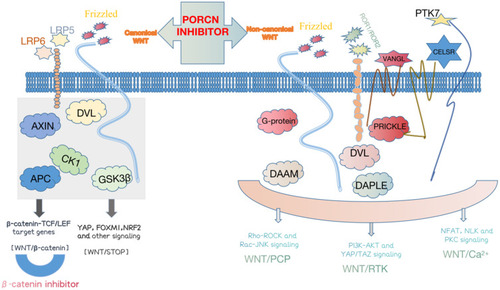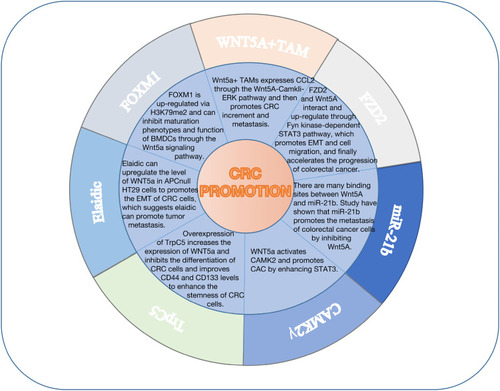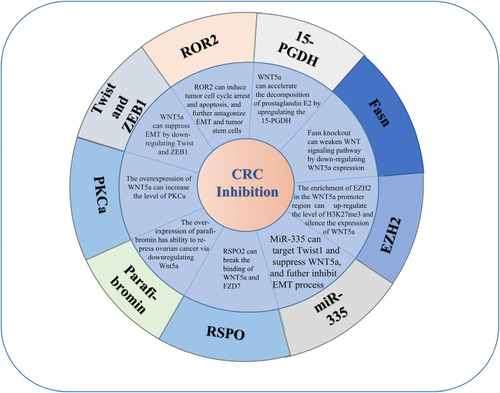Figures & data
Figure 1 Canonical WNT signaling is transduced by the WNT/β-catenin and WNT/STOP (stabilization of proteins) signaling cascades through Frizzled (FZD) and LRP5/6 receptors, whereas non-canonical WNT signaling is transduced by the WNT/PCP (planar cell polarity), WNT/RTK (receptor tyrosine kinase), and WNT/Ca2+ signaling cascades through FZD and/or ROR1/ROR2/RYK receptors.

Figure 2 In WNT/PCP signaling pathway, WNT5a can activate Dvl by forming complexes with FZD and Ror2 receptors, and furthermore, small GTP enzymes of the Rho family are activated, including RhoA and Rac, and their downstream effectors, Rho-associated protein kinase (ROCK), the actin-binding protein, Filamin A and c-Jun N-terminal protein kinase (JNK), and in turn PCP pathway is activated. This process leads to the rearrangement of the cytoskeleton and regulating polarized cell morphology and migration within tissues.Citation33–Citation36 WNT5a activation of the WNT/Ca2+ signaling pathway leads to the mobilization of free intracellular calcium, which regulates many cellular processes, including actin cytoskeleton remodeling and cell motility through activation of calcium-dependent signaling molecules.Citation37–Citation41 In the canonical pathway, WNT5a plays two roles. On the one hand, WNT5a can activate canonical pathways to regulate embryogenesis and cell fate specificity. On the other hand, WNT5a can repress the canonical pathway by promoting glycogen synthase kinase3-independent degradation of β-catenin in regulating mammalian limb development.Citation42,Citation43

Figure 3 WNT5a promotes the occurrence and development of colorectal cancer through multiple signal transduction pathways.

Table 1 WNT5a Promotes the Occurrence and Development of Colorectal Cancer Through Multiple Signal Transduction Pathways
Table 2 WNT5a Inhibits the Occurrence and Development of Colorectal Cancer Through Multiple Signal Transduction Pathways
Figure 4 WNT5a inhibits the occurrence and development of colorectal cancer through multiple signal transduction pathways.

